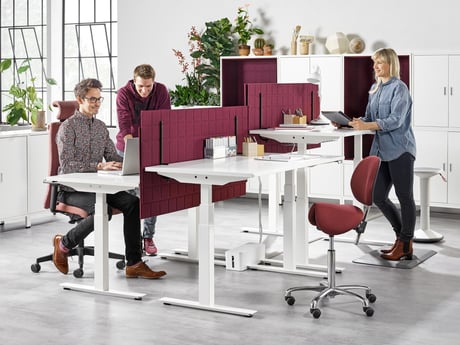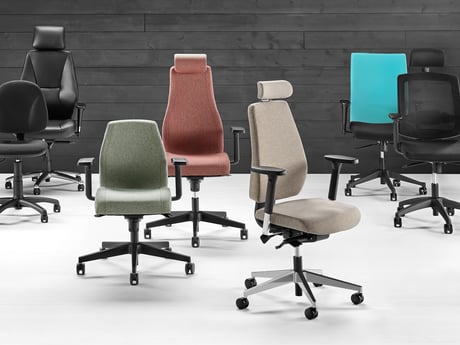Tips for better warehouse safety

How can you improve your working environment? The physical design has a big impact on the workflow and employee well-being, but it is also essential to anticipate potential dangers to minimise the risks of accidents. Here are some simple tips on how to improve health and safety in your warehouse.
Think about the floor
The floor is more important than you might think. Generally, warehouses have hard floors, which are ideal for use with forklift trucks. However, for jobs where workers stand for long hours, such as packing or operating machinery, a softer floor is better as it will help reduce strain on the feet, legs and back. This can be easily achieved by placing anti-fatigue mats on the floor. It’s also important to have a completely level floor, but if that is not possible a ramp is better than steps. Make sure that you fix any potholes in the floor because irregularities will increase the risk of accidents. Think also about the risk of wet floors due to cleaning, open doorways or machinery. Placing non-slip matting in high risk areas will help prevent the risk of slips and falls.
Look around the corner
Any warehouse that operates forklift trucks and other industrial vehicles will be well aware of the potential dangers they pose. It is important to have a clear view to prevent collisions with others vehicle or workers on foot. Mirrors at the end of pallet racking aisles or in other blind spots show forklift drivers what’s waiting around the corner. Even at limited speeds, this warning can prove to be extremely valuable from a safety point of view.
Create safe zones
Safe pedestrian pathways reduce the risk of injuries and are essential in large logistic areas both indoors and outdoors. If possible, try to separate the pathway with a physical barrier, such as a fence or a line of bollards. Alternatively, you could paint lines on the floor and use arrows and floor signs to mark transport routes, risk zones and escape routes.
It is also useful to have an easy-to-deploy barrier system in case you need to create a temporary no-go zone around hazards or repairs. Belt barriers or chain posts are a simple and portable solution that can be adapted to cordon off the required area in no time. When it’s all clear, you can take down the cordon quickly and store it for use next time.
Practice and prepare for evacuation
We can’t talk about personal safety and not mention evacuation of the workforce in the event of an emergency. It is essential that all personnel are given comprehensive training so that they know what to do in such circumstances. You should carry out frequent evacuation drills to ensure the knowledge stays fresh in everyone’s minds. Remember that you are also legally required to ensure that escape routes are clearly marked, easy to access, wide enough and free of obstacles.



